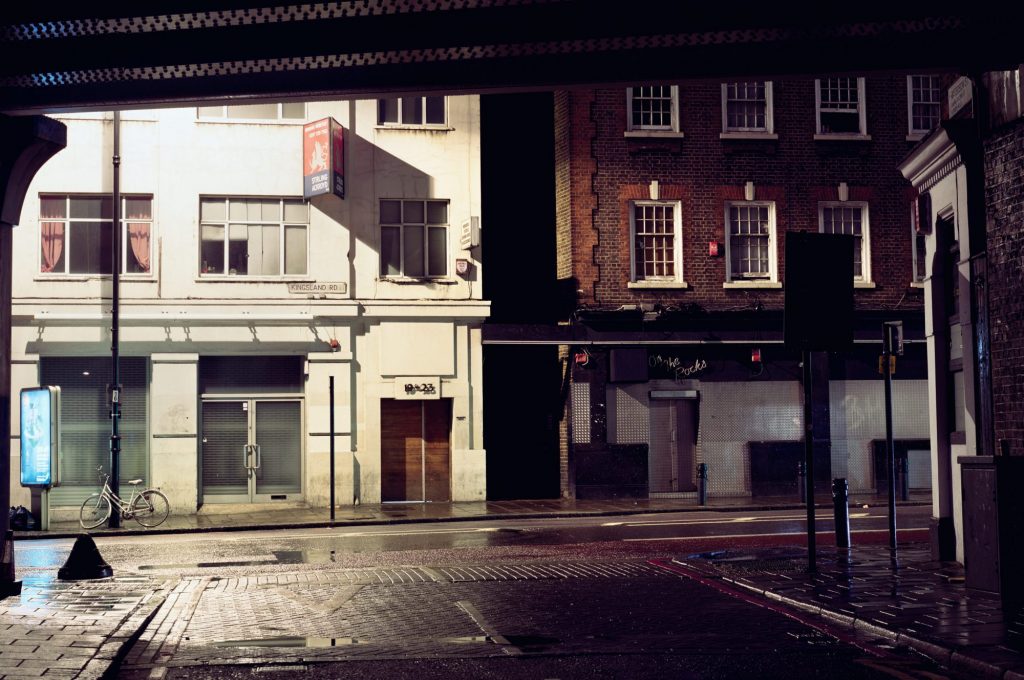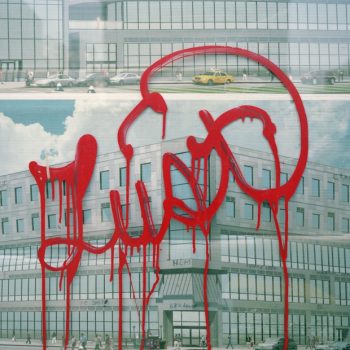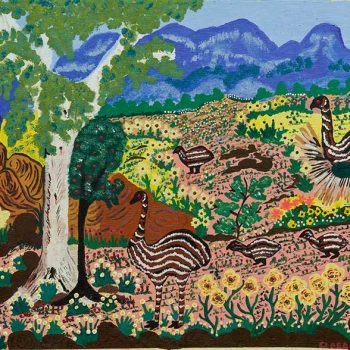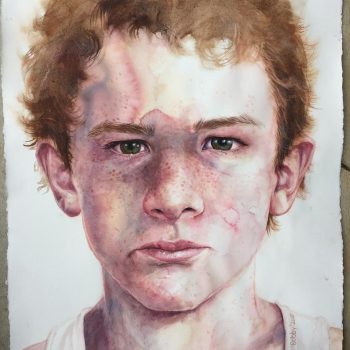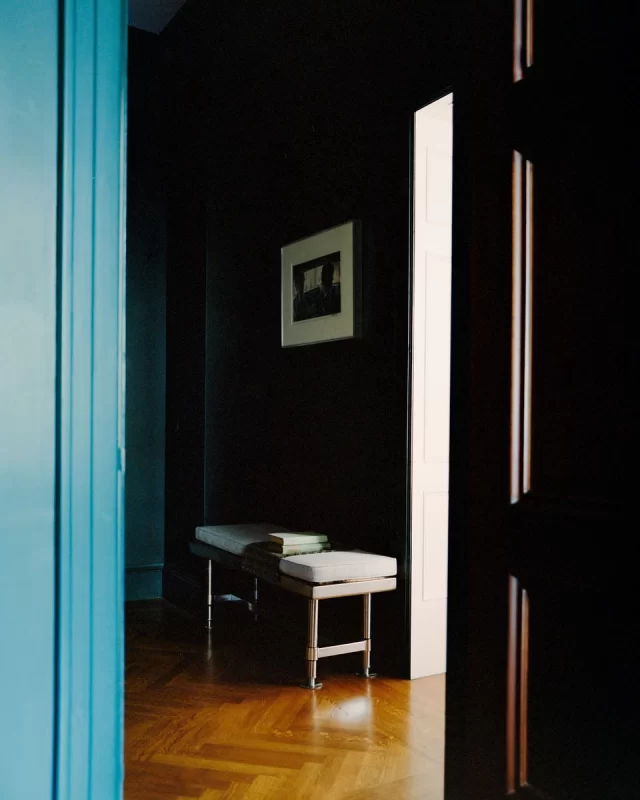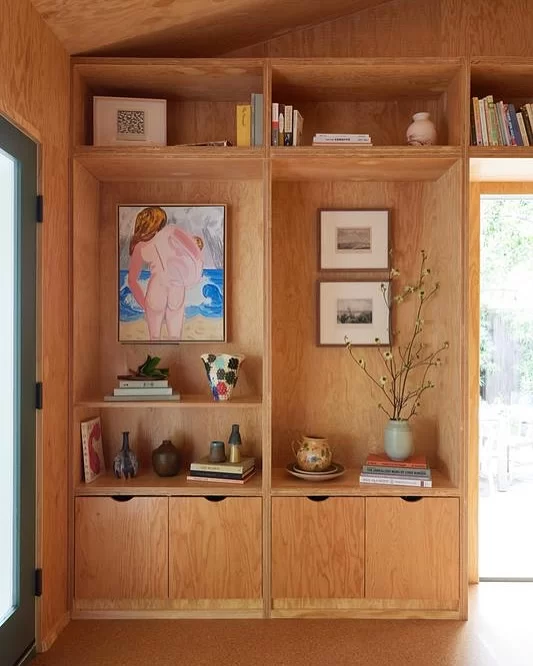__________________________
A sense of mystery, foreboding and the unknown symbolise this captivating work by Simon Terrill.
__________________________
The particular milieu Terrill has created means these elements are heightened in many ways, firstly, the viewer imagines a protagonist isolated in both darkness and time and in spite of a few contemporary attributes, there is a sense of having stepped into the past. Secondly, the relatively immaculate raven-black void between the two buildings, once apprehended, is difficult to ignore. It ambiguously represents both camouflage and exposure, exerting a forceful pull of dense equivocal darkness.
Much can be said of the wedge alone: it projects as almost the perfect antithesis. As an unconditional facet of this image, it exists outside the built environment yet only prevails because of it. In a perplexing visual conundrum it is both perpetually in the present yet paradoxically, deeply historical while these buildings define it.
Contingently, it plays an important role: hovering and interjecting both physically and psychologically on a coin flip of perniciousness and harmlessness depending on the viewer’s wealth of life experience.*
__________________________
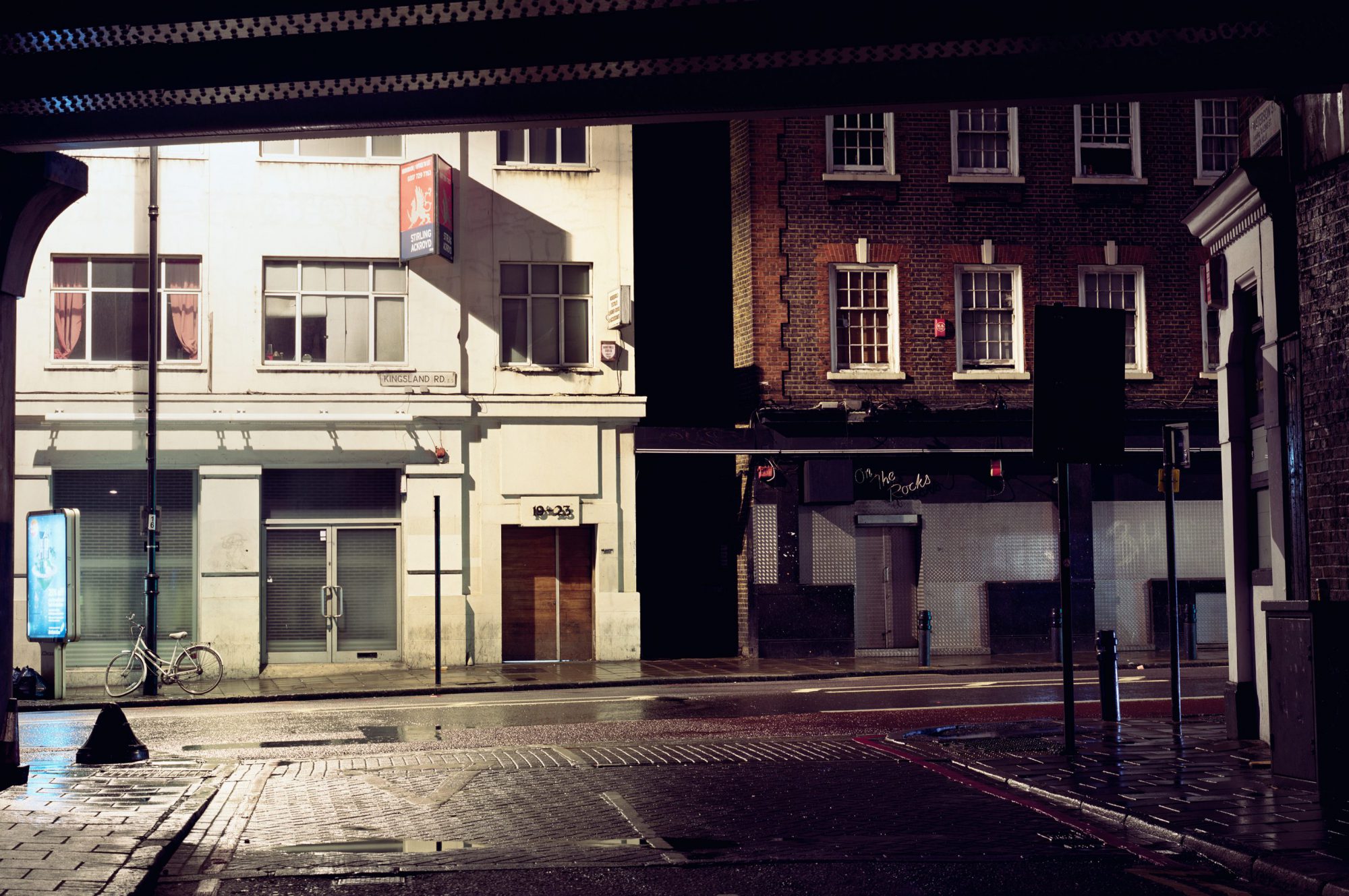
Contextually, each of the buildings communicate a powerful dichotomous appearance. Terrill has effectively established a ‘stage-set’, ensuring the viewer’s gaze pivots between the two whilst anchored to the black chasm and the shadow. At least superficially, they appear as clear univiting choices.
____________________________
The aftermath of rain underpins a plethora of salient elements: figmental visions, impending menace, a potent mysteriousness and aggressive ‘choices’ – all provoke a peculiar mental awareness. The viewer imagines a protagonist summarily confronted at the cross roads and in the prickling silence, you can hear a pin drop.
___________________________
The above elements can be linked to both cinema and art history.
____________________________

The past and the present
Although the architecture is clearly from the past, the manner in which it is viewed is a contrivance of Kingsland Rd where it actively contributes to the unnerving mood. It also provides the impetus for the striking effects of light which can be located in art history.
The imaging of a vigorous separation between dark and light began in earnest in the Baroque with Carravaggio as a singular proponent of chiaroscuro (and its expressive off-shoot tenebrisim) as a psychological technique with dramatic allure. A fertile ground was laid then for this type of imaging in art which capitalises on the effects and symbolism of light and dark (or day and night in this instance).
Aspects of film noir come to mind with the bleak eerie mood and compelling light: recall for example, electrifying street scenes from The Third Man. Add too, a waft of Giorgio de Chirico.
____________________________
Chiaroscuro, tenebrism, and sfumato were used by artists for different purposes: to create an air of mystery…psychological complexity, to evoke nightmarish realities, to produce haunting dramatic encounters, or to suggest the metaphorical battle of light and darkness playing out in a variety of contexts.
____________________________
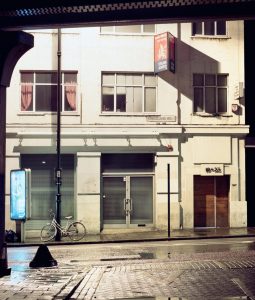
The cross
In addition to wet pavements, another factor adding to tangible immediacy is the Stirling Ackroyd (real estate) sign throwing a large precise shadow – one that further darkens and targets an impenetrable window. In combination our mind dances between the selected window and the one adjacent housing ‘innocuous’ pale pink curtains (almost overlooked). A nuanced tale plays out of questionable domesticity within a solitary environment.
From the end of the shadow our gaze drops down to the cross. The diminutive ‘Kingsland Rd’ sign sits innocently between the two. The signification of the cross (once seen) is problematic because it is deeply embedded as both a representation and a symbol in Western society. The definitive form is a signpost coalescing cultural inferences as well as various personal experiences and emotions ignited by immediate circumstances. Concepts like heaven and hell (or God and the devil), suffering and happiness, right and wrong, good and bad, and other context driven binaries.
Darkness and light have been used as symbols in world literature, throughout human history, from the divine proclamation of “Let there be light”, in the first book of the Bible, to harrowing passages of loss in contemporary literature.
Darkness and light in the classical canon typically represent two opposing forces of nature, whether good and evil, knowledge and ignorance, love and hate or happiness and despair.
By inference,Terrill has capitalised physically and psychologically on a plethora of binaries including the above knowledge and ignorance and good and evil, imparting at once ghostly light and dubious sleazy night. Contemporaneously, the wealth of sundry information picked out by the spectral light and obscure darkness emphasises the position of an unguarded novice occupying new and unearthly realms of possibility.
_____________________________
The window, like the cross, has significant emblematic history in art, cinema and literature: incidentally, the ‘shadow-lit window’ is not only closed, dark and dense, but it is specifically and uniquely darkened (albeit opportunistically), within the darkness until daylight reappears.
____________________________
Wet pavements
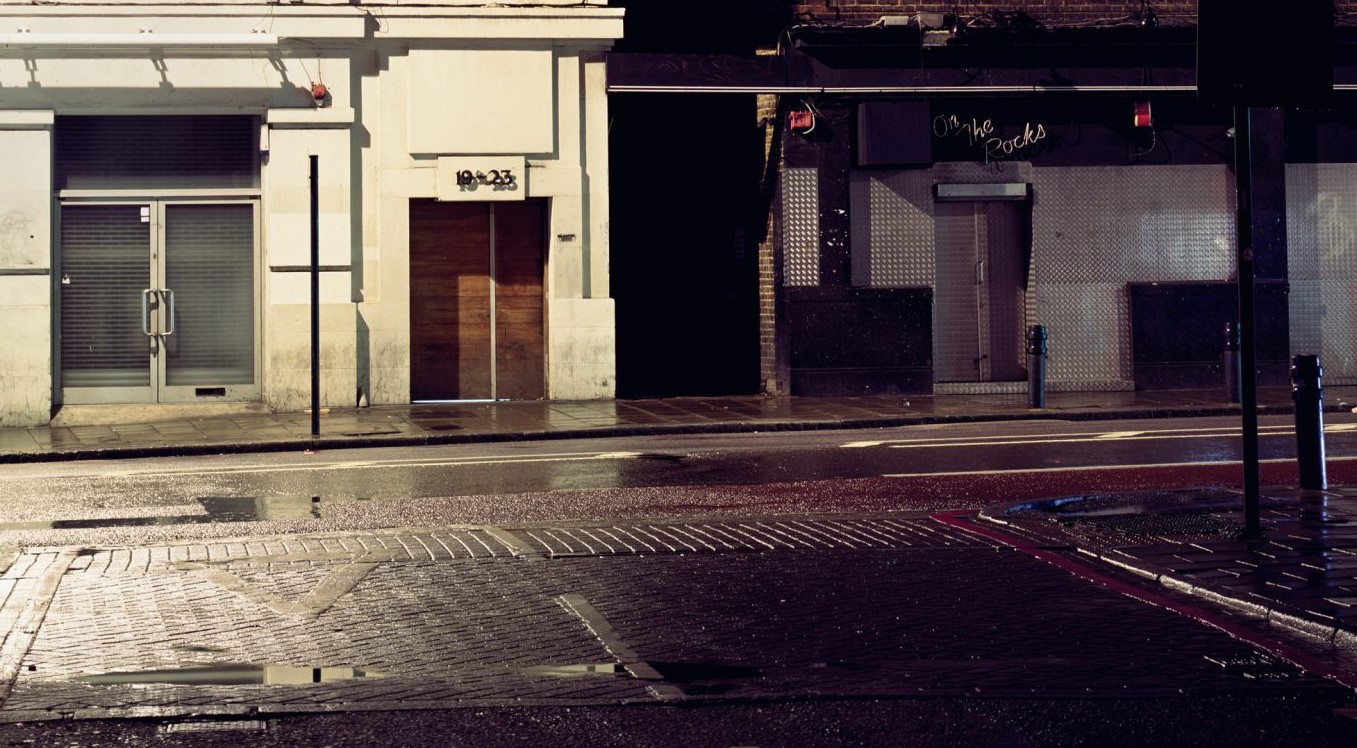
The wet pavements add a layer of intricacy to a tenebrous situation, however these pavements engage with the viewer beyond the impression of time passing and a changing situation.
The scene appears more sordid and conspicuous because it is a dark wet night, yet ironically that same condition along with the distinguishing light, adds to the cinematic beauty. The viewer observes the partially eclipsed “On the Rocks” bar sign across the wet foreground adding a layer of seediness; it is either shut or closed down but in conjunction with the moment, its ad hoc shabby surroundings assign gloomy tendencies to the present. This impression is multiplied because the light works negative psychology by setting the scene in ways that would not be apparent during the day. Architectural and urban oddities, items, protrusions and markings are enhanced by flitting in and out of consciousness.
The wet pavements fortuitously engender a silvery sheen (with strange blue highlights) that spotlight the visual ructions and iterations of the footpaths indicating the presence of a significant history, one that adds a veneer of disconcerting materiality. Effectively, from the “back streets of Dickensian London” to the here-and-now. The compaction of time (and as mentioned, history) works to manifest spectres and horrors buried in our psyche which could be anything from a bad dream to Jack the Ripper.
The technique employed by the artist has the street scene appear as if lifted from the past and placed disconcertingly in the present, like a movie still. Under these circumstances the past has the ability to spontaneously impact us, unbidden, in specific ways and circumstances.
______________
Meaning is an individual experience as Jean Robertson** says ‘No text has any single, correct interpretation; meanings change with the reader, the time and the context.’
____________________________
Kingsland Rd is an arresting image; Terrill crystallises the aesthetic, amplifies the distinctions and imbues an ‘arbitrary’ scene with converging and contrasting symbolism and meaning. The artist transitions a banal streetscape into a galvanising cinematic force by generating an unsettling, singular and powerful beauty.
____________________________
“Working with photography, sculpture, installation, drawing and video, Simon Terrill’s work investigates relations between architectural spaces and their received narratives, public and private identities, and the idea of the crowd as a tool to examine architecture, identity, community and a performance of self. His ongoing Crowd Theory project consists of large-scale stage-managed public events resulting in exhibitions at the sites of their creation along with collaborations with museums and public galleries to extend these images and stories outwards.”
Text courtesy Sutton Gallery
____________________________
Simon Terrill is represented by Sutton Gallery, Melbourne
____________________________
* Kingsland Rd is an artwork initiated to be both bought and viewed. It is a street scene which suggests people inhabiting the streets. The artist is a viewer and additionally envisages an implied spectator. Subconsciously if not overtly, the artist visualises a protagonist because built environments signify people, irrespective, that viewer and protagonist may or may not be, himself.
**Jean Robertson, ‘Themes of Contemporary Art ,1980 / 2005, Page: 24 / 25
____________________________

